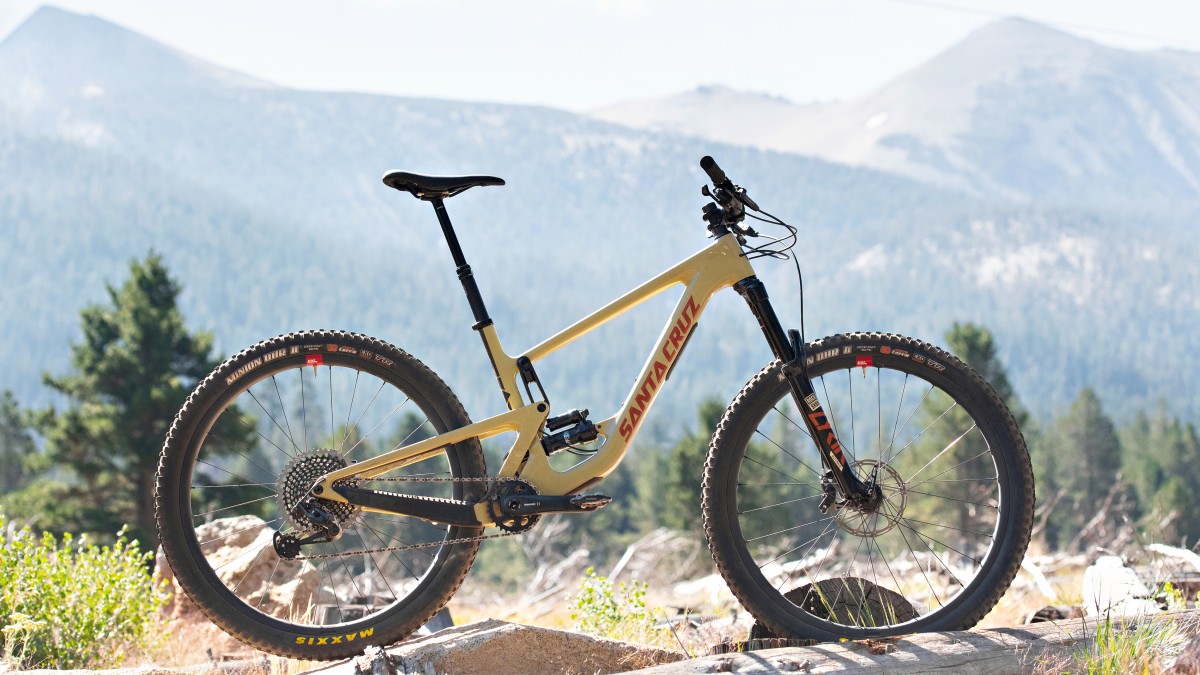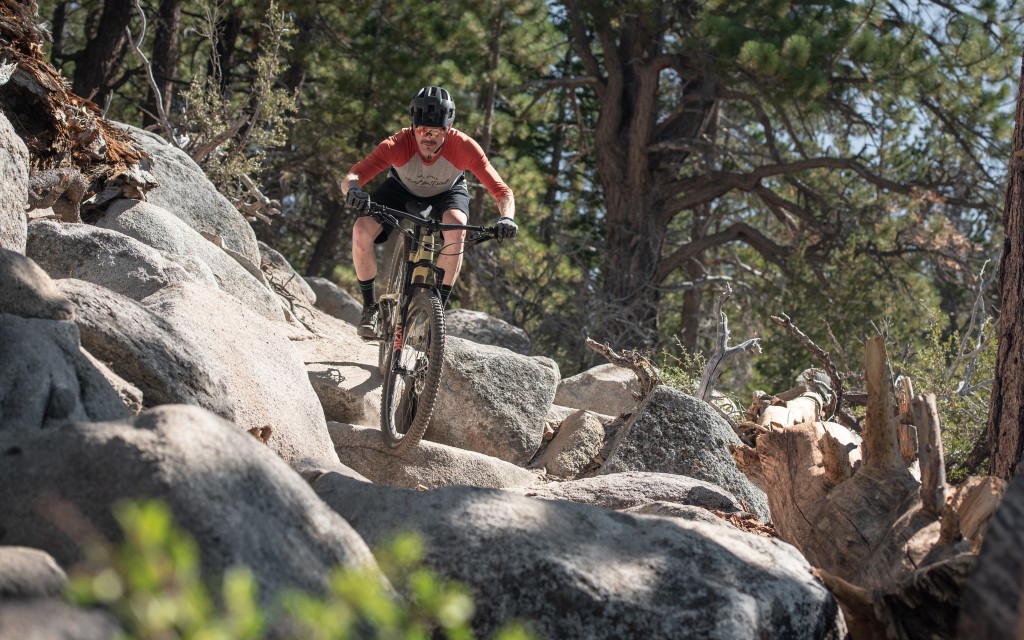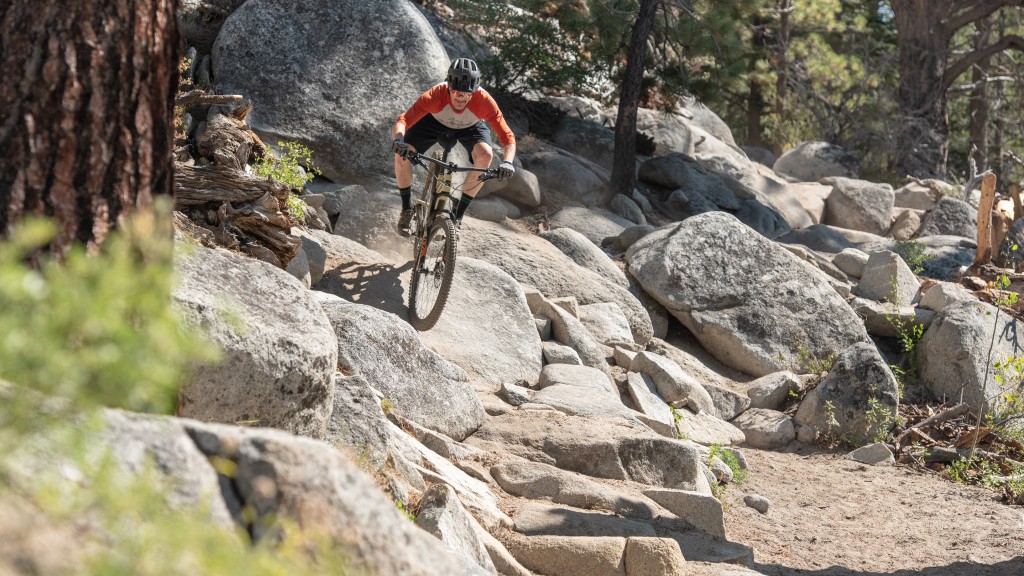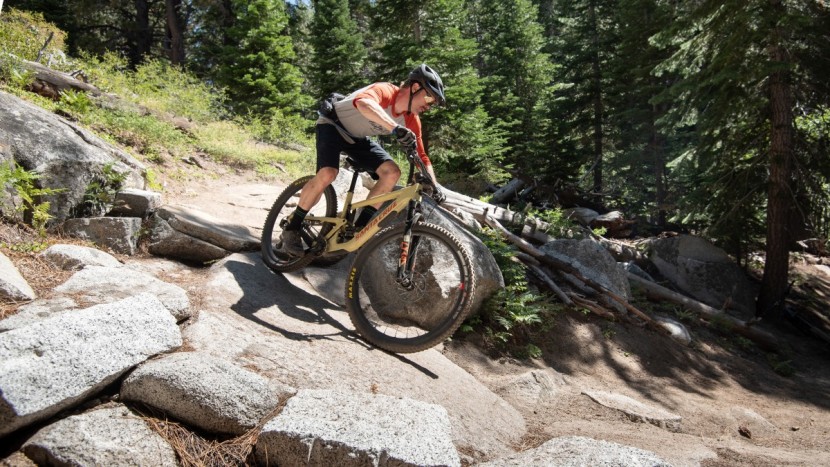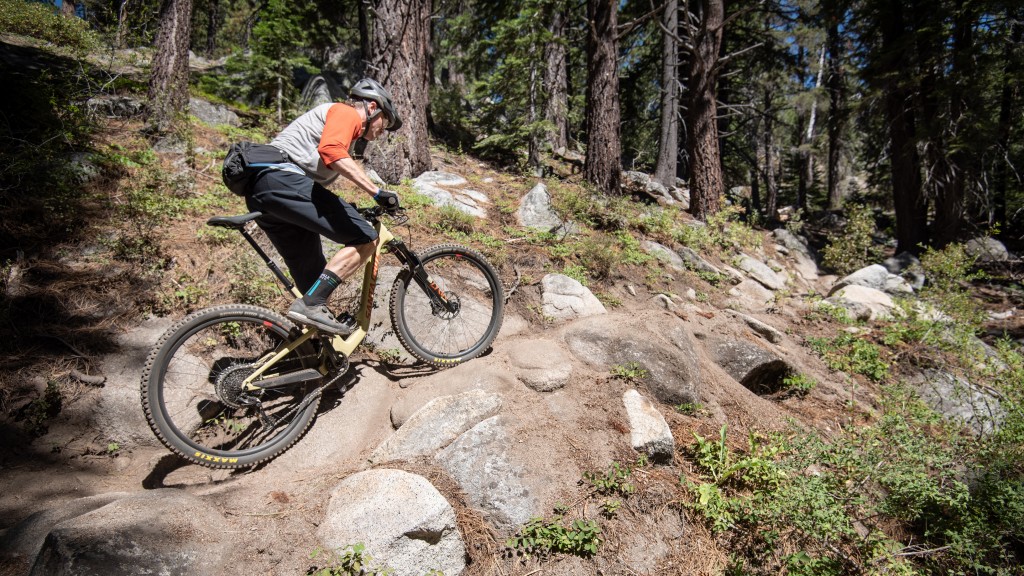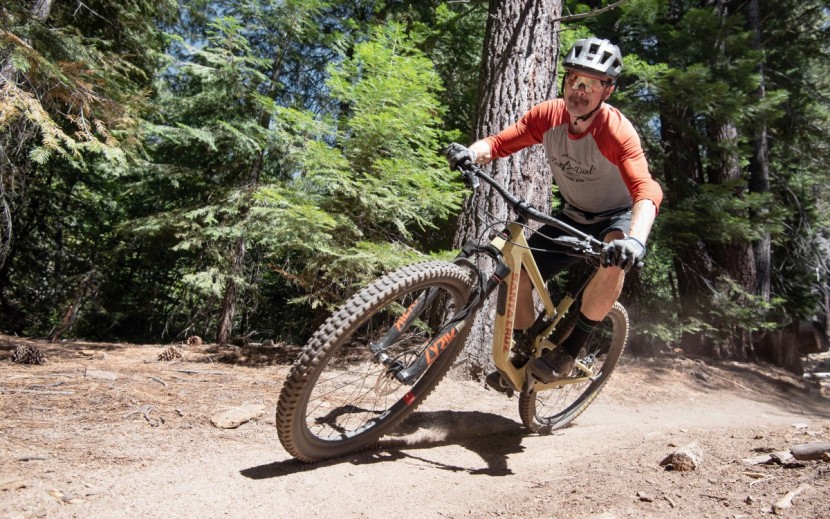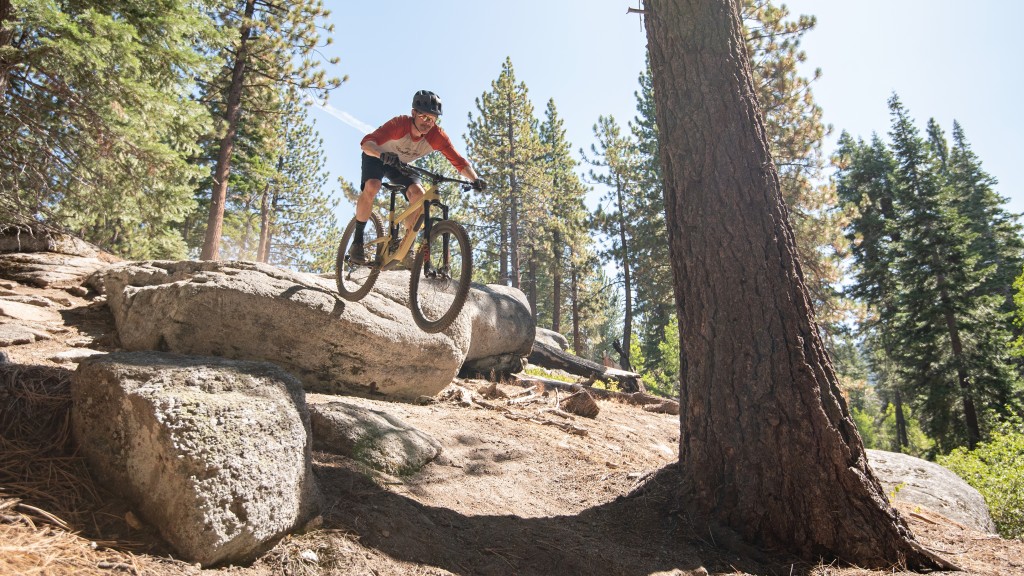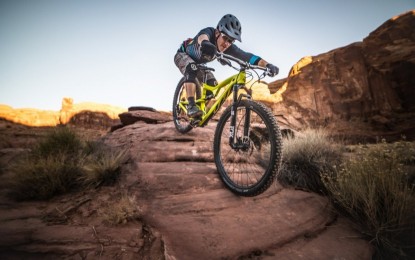Santa Cruz Hightower CC XO1 Review
Our Verdict
Our Analysis and Test Results
Santa Cruz recently launched the Hightower 3, an updated version of the model we tested that features some small changes. First, the frame now features the Glovebox in-frame storage compartment and a Sag Window to easily view your rear shock's sag. The geometry has been changed, but only slightly, with a 0.5-degree slacker head tube angle, a 2mm increase in reach measurement, and size-specific chainstays. The leverage ratio and anti-squat values have reportedly also been tweaked slightly. We are hoping to throw a leg over the new version in the near future to update this review. -October 2022
Should I Buy This Bike?
If you're a skilled rider looking for a hard-charging upper-mid travel 29er trail bike, then there's a good chance you should buy or at least consider the new Hightower. Did you love the previous Hightower LT but always wished it charged a little harder? Were you quick to buy a Megatower only to realize it's a little too much for everyday trail riding? Or are you simply looking for for a 29-inch trail bike that is ultra-stable at speed and confidence-inspiring in aggressive terrain? Well, the 2020 Hightower may be exactly the bike you're looking for. Make no mistake, the new Hightower is longer and slacker than the previous versions and has sacrificed a little maneuverability and agility in exchange for its more stable and planted downhill smashing capabilities. We think it's fair to say it's a bit less of an all-around trail bike as it used to be and feels almost like an aggressive mini-enduro bike that needs a little speed to come alive. Its stability is impressive and it handles steeps, big hits, and chunk with confidence, comfort, and zero complaints. Steering remains precise and the VPP platform is impressively supportive and solid when it comes time to lay down the power on both the climbs and descents. Don't let the $8,299 price tag of the model we tested scare you either, there are 8 different complete builds starting at $2,899.
The new Hightower is similar in many ways to the Ibis Ripmo. Both bikes are aimed at the same riders and terrain, but the Ripmo sports a touch more travel with 147mm in the rear and a 160mm travel fork. The Ripmo has a similar wheelbase length and slightly slacker head tube angle of 64.9 degrees, yet it has a noticeably snappy, sporty, and more lively feel without sacrificing anything in the way of downhill capability. The Ripmo also climbs like a goat and feels easier to handle in tighter or technical sections on both the climbs and descents. We feel the Ripmo is a bit more versatile and well-rounded, though the Hightower's VPP platform might work better for some riders. If you're a hard charger, we think you'd probably be happy with either, though we'd probably steer those who value all-around performance toward the Ripmo and those who prioritize smashing downhill toward the Hightower.
Frame Design
The Hightower has been given a full makeover and that includes the geometry and suspension platform. Santa Cruz has hung their hat on their VPP (Virtual Pivot Point) suspension design, and in the past couple years they've been switching nearly all of their new models to the low shock mount arrangement. It now looks almost identical to the frames of the Megatower, Bronson, Nomad, and the new Tallboy. The low mount attaches the shock low on the downtube and passes through a hole in the bottom of the seat tube to its attachment on the linkage to the rear triangle. This helps keep the weight of the shock and linkages lower on the bike and changes the curve of the rear suspension. On the Hightower, this design can only accommodate air shocks. The lower rocker linkage connects the front and rear triangles right behind the bottom bracket. The upper linkage is attached to the top tube just in front of the seat tube and extends down to rear triangle at the top of the seat stays. It also has a flip-chip integrated into the lower shock mount that allows the user to choose between a high and low setting, adjusting the geometry of the head tube angle by 0.3 degrees, the seat tube angle by 0.5 degrees, and the bottom bracket height by 4mm.
Our test model had a full carbon fiber CC frame with girthy tubing and a stout rear triangle. There is room for a water bottle within the front triangle with full-sleeve internal cable routing, an integrated chainstay protector, a protective bottom bracket, and shuttle guards on the underside of the down tube. We measured our size large test bike and found it has a 619mm top tube length with a 470mm reach. The head tube angle was measured at 65.2 degrees/65.5 degrees, and the seat tube angle was 76.3 degrees/76.8 degrees in the low/high settings, respectively. The wheelbase was 1230mm with 435mm long chainstays and a 340mm high bottom bracket in the low setting. It tipped the scales at 29 lbs 14 oz set up tubeless without pedals.
Design Highlights
- Carbon fiber CC (tested), carbon fiber C, and aluminum frames available
- 29-inch wheels only
- 140mm of VPP rear suspension
- Fits air shocks only
- Designed around a 150mm fork
- Adjustable geometry (flip-chip)
- Recommended rear tire clearance up to 2.4"
- Offered as frame only in aluminum for $1,999 and carbon fiber CC for $3,299
- Aluminum builds starting at $2,899 and carbon fiber builds ranging from $4,299 to $10,499
Downhill Performance
If the Hightower was a burglar, it would definitely smash and grab as opposed to being a quick and quiet cat burglar or Mission Impossible-style thief. The updated longer and slacker geometry give this bike more of an enduro-style feel and has made this bike especially stable and confidence-inspiring; it takes a little speed to get it to come to life on the descents. Once you've got a head of steam, however, there's seemingly nothing this bike can't plow over or through, and it does so with confidence, composure, and excellent deep stroke support. It's not especially lively, especially at lower speeds or in tighter, slower, terrain, though it still handles relatively well considering its length and angles. The component specification on the Carbon CC XO1 build we tested is top-notch and definitely helps make this bike a hard-charging downhill slayer.
These days we feel a bit like a broken record when we talk about the modern geometry of pretty much every bike we test. Keeping with that trend, the new Hightower has a modern progressive geometry that includes a longer reach and wheelbase as well as a slacker head tube angle than the previous version(s). In fact, the wheelbase has been lengthened by over 30mm, and the head tube angle slackened by 0.5/0.8-degrees depending on which flip-chip setting you're in. While these changes have undoubtedly helped to give this bike more stability and charge-ability, it has the adverse effect of making it feel a little sluggish at lower speeds, in switchbacks, and in tight technical sections of trail. This is not to say that it's bad at low speeds or in tight terrain, but a calculated approach and a skilled pilot are beneficial in those situations.
The new Hightower has a flip-chip integrated into the lower shock mount that allows the user to choose between a high or low setting to adjust the geometry to their preferences. We tested it in both settings and found that although the geometry changes seem quite minimal on paper, they produce distinctly different rides. Santa Cruz ships the Hightower in the low setting which has a 65.2-degree head tube angle, a 76.3-degree seat tube angle, and a 340mm bottom bracket height. Testers found this setting to feel great when mobbing downhill on more gravity-oriented trails where pedaling efficiency was less of a concern. If we were shuttling or pedaling fire roads to the top of our descents, the low setting was perfect. Flipping the chip to the high setting gives you a 65.5-degree head tube angle, 76.8-degree seat tube angle, and raises the bottom bracket height by 4mm. The high setting feels more efficient for tackling rolling terrain or descents that are interrupted by short punchy climbs, this was preferred for everyday trail riding.
Santa Cruz has been using the VPP suspension design for as long as anyone can remember, and that continues with the new Hightower. As part of the update, Santa Cruz has given it the low-mount shock orientation that has been proven on their V10 DH bike as well as the newer Nomad, Bronson, and Megatower models. This updated design provides excellent support, especially under pedaling, with a plush feel on medium to large hits with a progressive ramp-up at the end of the stroke. Our testers ran the suspension at 30% sag and never felt like they were blowing through the travel the way they do on similar bikes. The Hightower never felt like it wallowed or wanted to stay deep in the travel, it recovered very well and feels quick out of corners when you get on the gas. The Super Deluxe Ultimate rear shock was excellent. Our testers ran the pressures at or a touch lower than usual and added a few clicks of low-speed compression damping (the external adjustment dial is nice) to dial in the feel. Our only complaints with the VPP platform is that small-bump compliance isn't amazing, and it tends to feel chattery over high-frequency chop compared to some other designs.
The build of our $8,299 test model was stellar. The suspension package includes a RockShox Lyrik Ultimate fork and Super Deluxe Ultimate rear shock. Both are highly tuneable and felt outstanding and well-balanced on this bike. The Code RSC brakes were also excellent. Sure, they were brand new, but they felt truly amazing throughout our testing and helped give our testers confidence and control while mobbing around on the Hightower. The cockpit setup is perfectly dialed as well. The 800mm carbon bars, short stem, and 175mm Reverb Stealth dropper are all great and provide excellent and responsive steering and control on the descents. The Santa Cruz Reserve Carbon wheels are a $1,200 upgrade, but they have an excellent ride quality, a proper 30mm internal rim width, and a lifetime warranty. The 10-degree freehub engagement isn't great, however, and we'd expect better on a bike that costs this much. The Maxxis Minion DHR II tires are solid, although all of our testers agree that it's not their first choice on the front of the bike. The side knobs are large and aggressive, but a more directional center tread, like that of the DHF, provides more predictable traction and steering in our loose/loose over hard test conditions.
Uphill Performance
Considering the hard-charging downhill performance of the Hightower, it performs remarkably well on the climbs. It has a comfortable seated pedaling position with a long-ish reach, a steep seat tube angle, and a roomy cockpit. The VPP platform is very supportive under seated pedaling and power transfer feels very direct and efficient. This bike motors up fire roads and smoother sections of trail, but due to its length it can feel a bit unwieldy in tight turns or low-speed tech. Overall, our testers were relatively impressed with its climbing abilities.
The Hightower looks like it should be heavy, but our tricked out test bike only tipped the scales at 29 lbs and 14 oz. This is comparable to other similar bikes in this travel range. It doesn't feel as light as these numbers suggest, though it certainly doesn't feel heavy. The new geometry lends itself to a comfortable climbing position. The seat tube angle is steep in both the flip-chip settings at 76.3/76.8-degrees respectively. The top tube isn't especially long at 619mm, though the reach is long-ish at 470mm. Thanks to the steeper seat tube angle, the reach never feels long, instead, it feels nice and roomy and easy to settle into on long climbs. The 1230mm long wheelbase is another story. While it's great for motoring along in a straight line and powering over obstacles with momentum, it can be a handful in tight turns or at low speeds on the climbs. For singletrack climbing and more rolling terrain, testers preferred the high geometry setting that gave them a slightly higher bottom bracket and slightly steeper head tube angle for more responsive handling and fewer pedal strikes.
The VPP suspension platform is known for providing a supportive and calm pedaling platform and it is excellent on the climbs. There is very little suspension movement when seated pedaling, in fact, our testers never felt the need to use the climb switch on the rear shock. When you jam on the pedals out of the saddle you'll notice some suspension movement, though less than the majority of other bikes in this travel range. Interestingly, this bike never feels really energetic or lively while climbing, it felt best to settle in and just grind it out in the saddle.
The component spec was mostly amazing on the climbs. The SRAM XO1 drivetrain performed flawlessly and was a nice treat compared to the GX, NX, and SX Eagle drivetrains we've been testing on other bikes recently. We understand the reason for putting 170mm cranks on the Hightower, though we definitely noticed a slight decrease in leverage and power while climbing with them. Our taller testers would have preferred longer cranks for climbing efficiency. The Maxxis Minion DHR II is a great rear tire and it provides tons of climbing traction in most conditions including the loose dirt and moon dust we encountered while testing.
Photo Tour
Value
The $8,299 Carbon CC XO1 Reserve build we tested doesn't come cheap. It falls near the upper end in price of the Hightower build options. The component specification of this bike is perfect in nearly every way, so if you can justify the expense we doubt you'll be disappointed. You can also get this bike with alloy Race Face wheels instead of the Reserve option for $1,200 less, which may be a good option for anyone not sold on carbon hoops. Those looking to spend significantly less will be happy to know there are 3 aluminum-framed models that range in price from the entry-level D-build at $2,899 up to the nicely equipped S-build at $4,199. Carbon models range in price from the Carbon C R-build at $4,299 up to the tricked out Carbon CC XX1 AXS at a jaw-dropping $10,499.
Conclusion
Skilled aggressive trail riders will absolutely love the new Hightower. The recent updates to the geometry and the suspension design have turned this rig into a hard-charging downhill crusher. It feels a little less like a pure trail-bike than the previous version, but it's impressively stable at speed and inspires loads of confidence in steep and rowdy terrain. The added length can be a handful in tight and technical terrain, a tradeoff for its confident and composed performance when things get gnarly.


